Unlocking the Potential in Your Workforce Data
Communicating complex ideas to diverse stakeholders is central to reliable decision making. Stakeholders may vary greatly in their interest, familiarity, or expertise with data regarding a policy, program, or practice. Well-designed data visualizations provide a platform for engaging stakeholders in ways that are tailored to their interest, familiarity, and expertise. However, research indicates that visualizations are not always designed effectively to reliably motivate users to understand and ultimately use the data in their decision-making (Evergreen, 2011; Cawthon & Moere, 2007).
Thoughtful and engaging visualizations demand the stakeholders’ attention and can facilitate the comprehension of findings (Hillstrom & Yantis, 1994; Treisman, 1988). As such, data visualizations can encourage stakeholders to engage with data on their own terms, by asking and answering their own, often unique, questions. The following examples demonstrate a few different ways data visualizations can be designed to engage stakeholders.
Tooltip
A stakeholder may want to know the current staffing levels relative to certain bureaus within their child welfare agency. Hovering the cursor over the bureau in an organizational chart reveals a “tooltip” with the exact staff size for the bureau.
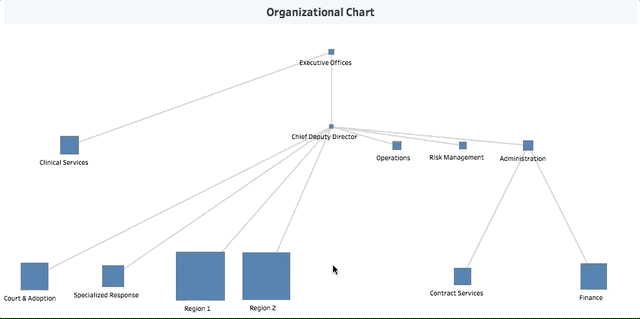
Dashboard Action
A regional office director has expressed a need to hire more frontline staff; and, a relevant stakeholder is interested in learning how many frontline staff are active within the office by unit, job level, and tenure. Clicking on the office in the map shows the frontline staff counts and percentages for each of these characteristics within the office.
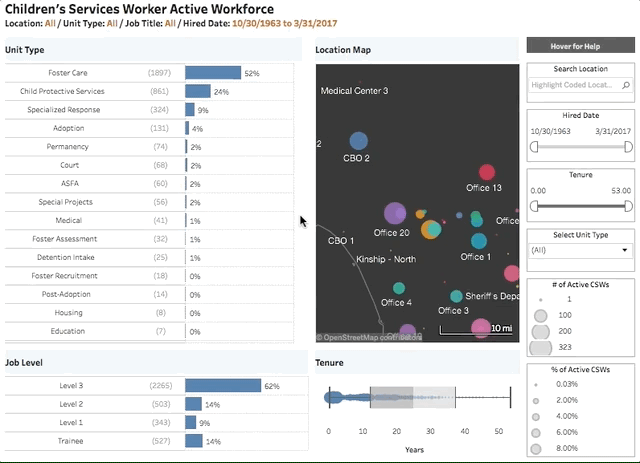
Filter
Using the hired date filter, a human resources (HR) professional can see in which locations, units, and levels their recent hires are currently working, to explore their most recent hiring efforts.
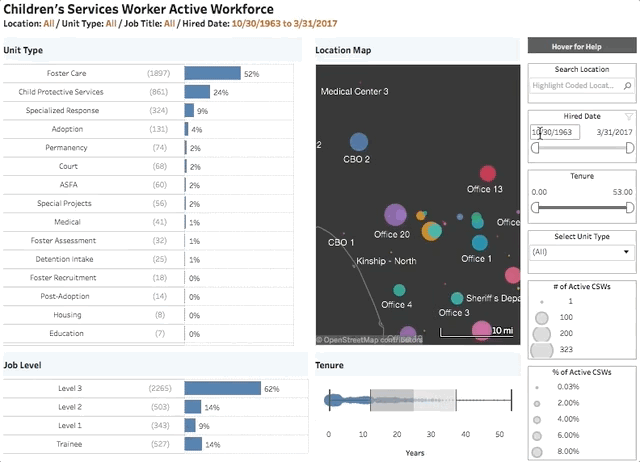
Visual in Tooltip
A survey was administered to assess the quality of a training academy provided for a group of new hires, and the training manager wants to quickly see what percent of trainees gave positive feedback for the different dimensions of the academy. The training manager notices that one dimension didn’t receive as much positive feedback as other dimensions and wants to better understand why. Hovering the cursor over the dimension provides the training manager the ratings of individual items within the dimension.
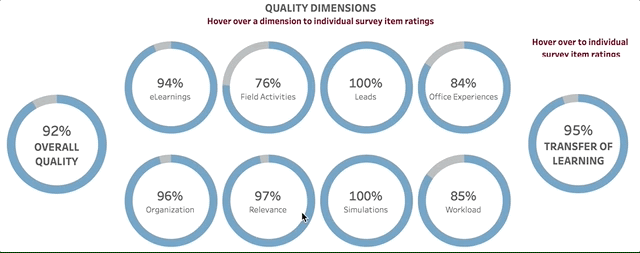
Select View
A policymaker wants to examine how Title IV-E budget estimates have compared across fiscal years relative to the foster care population size to assess potential funding needs for foster care and adoption after their community recently experienced a large increase in their foster care population. Changing the view enables the policymaker to switch between the total budget estimates and budget estimates for foster care and adoption.
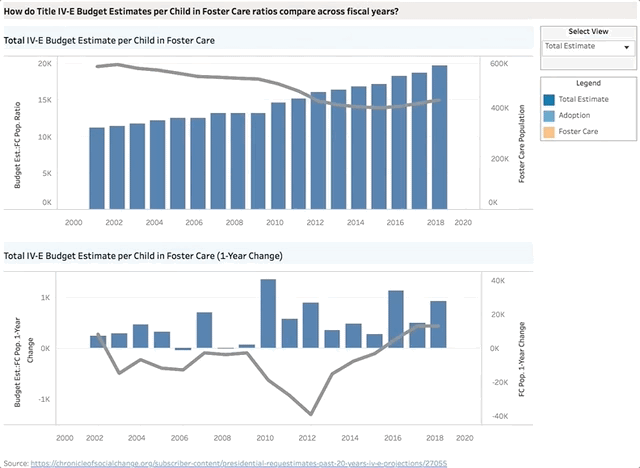
Designing such engagement with data, may serve to encourage use of evidence (e.g., Patton 2008), by supporting understanding and discussion that can bring meaning and relevance to data. Modern data visualization tools and platforms (e.g., Tableau, D3, Microsoft BI Desktop, SAS, and a growing list of others) allow people to easily share (e.g., online, via email, text message, paper, etc.) data visualizations with other stakeholders that are relevant to decision making processes, thereby encouraging reliable decision making and effective action.
While these tools and platforms provide almost limitless design possibilities, data visualization developers must foster relationships with the relevant stakeholders to ensure: (1) the quality of the data, (2) the visualizations are clear and display the data accurately, and (3) the data is presented at the appropriate level for the stakeholders’ interest, familiarity, and expertise. In the future, you’ll see more of the ways the UCLA Social Welfare Evaluation Group is partnering with the QIC-WD and its sites to unlock the potential in their workforce data, to make timely and reliable decisions through data analyses and visualization.